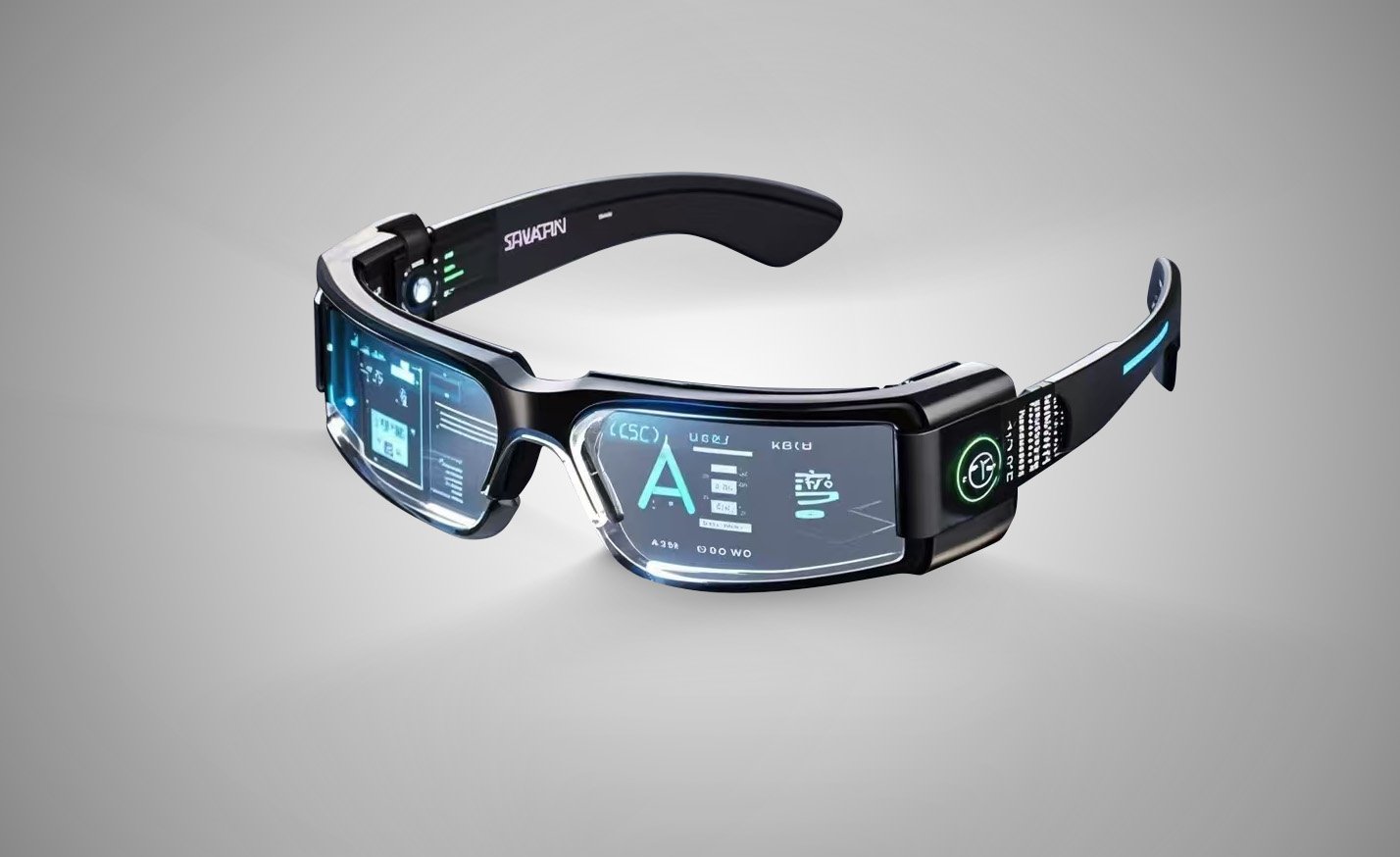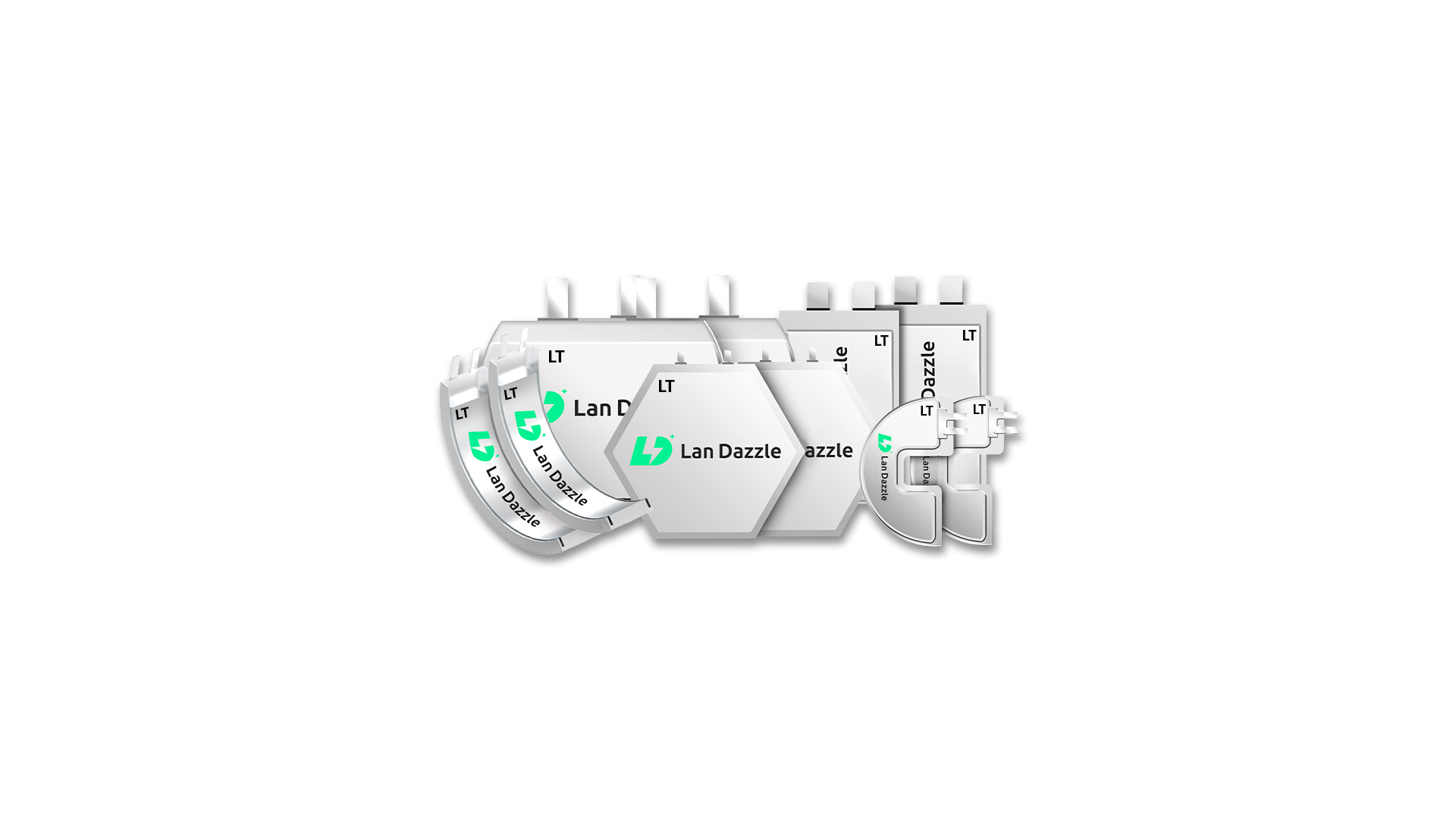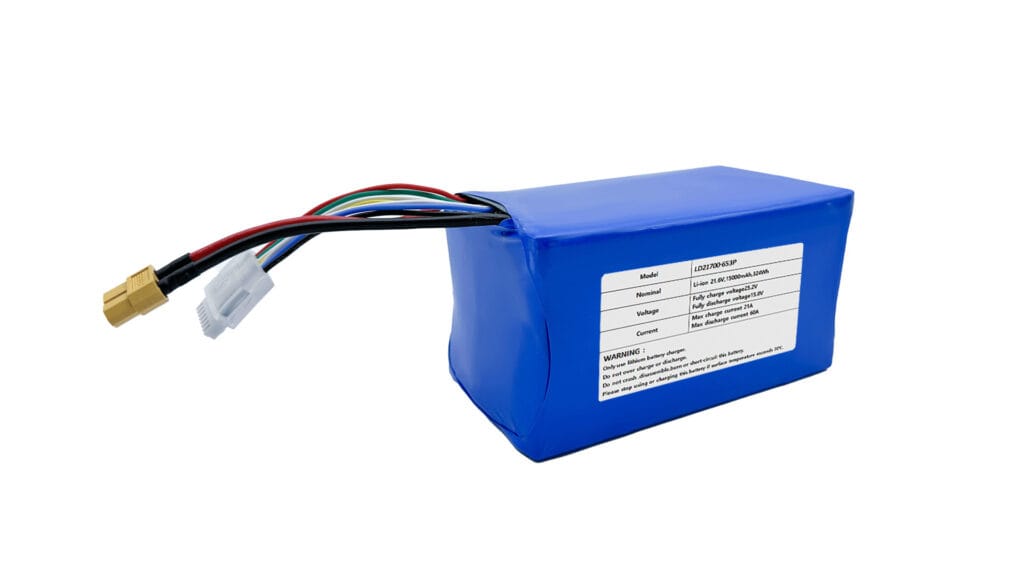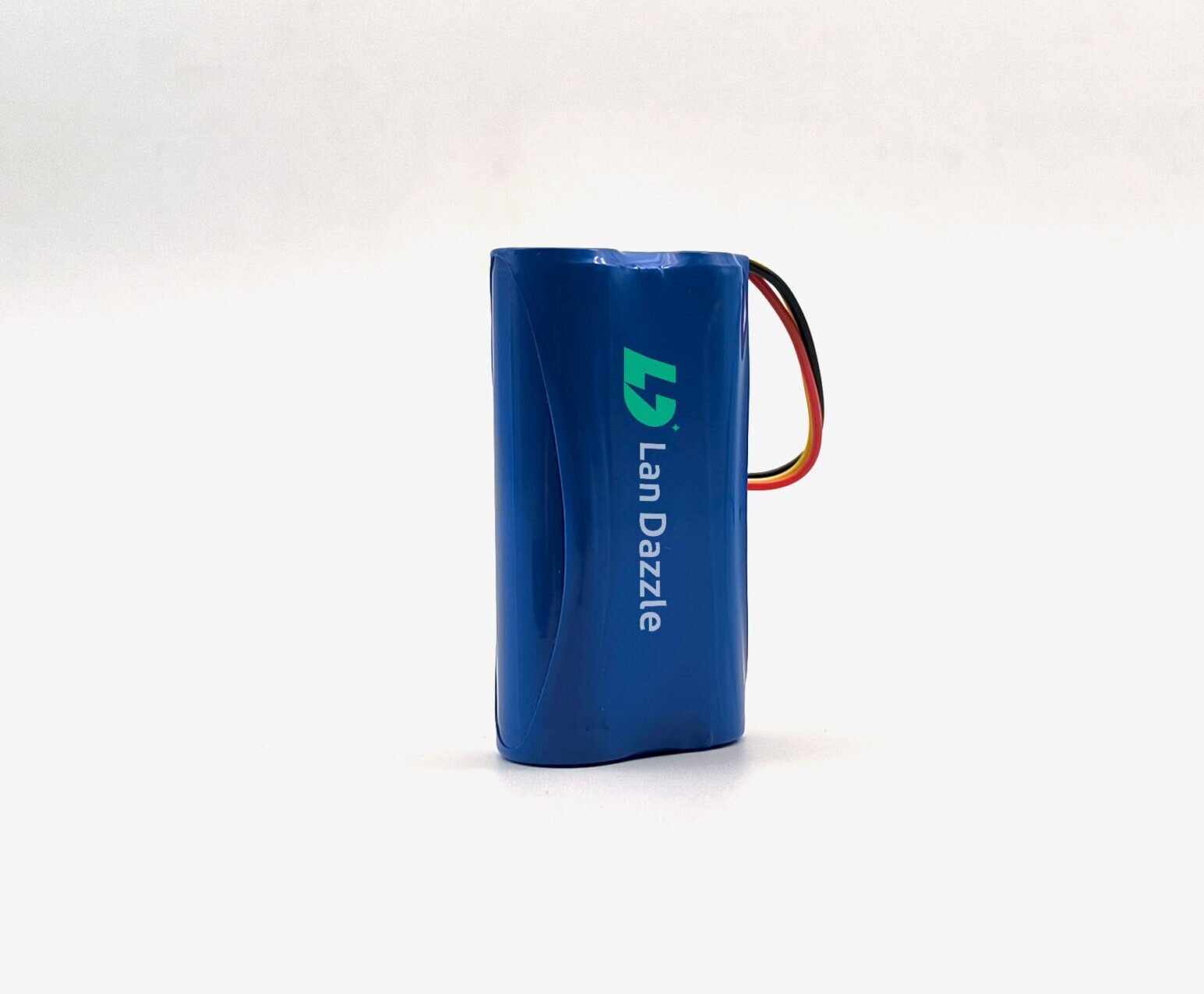Smart glasses are quickly becoming the next big thing in personal technology, blending digital information with the real world. From AR displays and real-time translation to hands-free calls and discreet photo capture, they promise to change how we interact with both data and people.
But one key challenge remains: battery life.
In 2025, as smart glasses move from niche to mainstream, how long they can stay powered is more important than ever. A device meant for “all-day use” is only as good as the battery behind it. Makers must balance size, power, and performance in a very limited space.
In this article, we’ll explore today’s top smart glasses battery solutions, look at new technologies like silicon-carbon and solid-state batteries, and compare the battery performance of major brands. Our goal: find out which power solution leads the way in 2025—and what’s next for powering smart vision.
The Current Landscape: LiPo and Silicon-Carbon Batteries in Smart Glasses
In 2025, Lithium Polymer (LiPo) batteries are still the most common power source for smart glasses—and for good reason. LiPo batteries offer a strong mix of flexibility, lightweight design, and high energy density, all of which are perfect for the slim and stylish frames of modern wearables.
Because they use a polymer-based electrolyte, LiPo batteries can be made ultra-thin, curved, and shaped to fit into the limited space available inside smart glasses. Their compact size and light weight help keep the glasses comfortable for all-day wear. That’s why they’re found in many mainstream models, including Ray-Ban Meta, which offers around 4 hours of use.
However, there’s growing interest in more advanced battery technologies—especially silicon-carbon batteries. These are a new evolution of lithium-ion batteries where the traditional graphite anode is replaced (or blended) with silicon-carbon materials. The benefit? Much higher energy density—meaning more power in the same size, or the same power in a smaller, lighter battery.
This shift is already visible in high-end products. For example, Xiaomi’s AI Smart Glasses use a 263mAh silicon-carbon battery to deliver up to 8.6 hours of mixed use—more than double the runtime of some LiPo-powered models. Even though the exact chemistry of models like Oakley Meta HSTN isn’t always confirmed, similar long runtimes (~8 hours) suggest a move toward more efficient, next-gen battery solutions.

That said, both LiPo and silicon-carbon batteries have limits. Over time, they degrade with repeated charging, and they’re sensitive to heat or cold. Smart glasses need built-in Battery Management Systems (BMS) to monitor safety and optimize performance.
So, where do things stand in 2025? Most audio-first or budget models still rely on LiPo, while premium, performance-focused glasses are adopting silicon-carbon to push battery life further—without making the design bulky. At the same time, brands are also working hard to cut power usage in other components like processors, displays, and wireless chips to stretch battery life even more.
Emerging Battery Technologies
The most anticipated long-term challenger is the solid-state battery. Unlike LiPo or silicon-carbon, which use a liquid or gel electrolyte, solid-state batteries employ a solid electrolyte. This fundamental difference brings a host of potential benefits:
- Higher energy density: Theoretically, solid-state batteries can pack significantly more power into the same volume or weight, potentially offering two to three times the energy density of conventional LiPo cells (research targets over 500 Wh/kg). This translates directly to dramatically longer battery life without increasing the size or weight of the glasses.
- Improved safety: Eliminating flammable liquid electrolytes drastically reduces the risk of thermal runaway, making them inherently safer.
- Faster charging: Some solid-state chemistries show promise for ultra-rapid charging, reaching high capacities in mere minutes.
- Longer lifespan: They are expected to endure more charge cycles before significant degradation.
However, solid-state batteries face considerable challenges in 2025. Manufacturing complexities, high production costs, and the difficulty of reliably integrating them into the tiny, complex form factors of smart glasses are significant hurdles. While we might see solid-state prototypes or very limited, high-end deployments in 2025, widespread commercial availability in consumer smart glasses is likely still several years away. Research and development are intense, with breakthroughs continuously being announced, but scaling these advancements remains the key.
Beyond solid-state, micro-batteries and flexible batteries are crucial for advancing smart glass design. These innovations aren’t necessarily new chemistries but rather new ways of packaging existing ones, often highly miniaturized LiPo or silicon-carbon, to fit the unique ergonomic requirements of eyewear.
- Micro-batteries are miniaturized cells designed for incredibly small spaces, enabling more discreet components and lighter designs. They are essential for devices that need to be barely noticeable.
- Flexible batteries can bend and twist without losing integrity, allowing them to be integrated into curved temples or other unconventional areas of the frame, further enhancing comfort and aesthetics. These are already being explored in some medical wearables and early smart glass concepts, like those demonstrated at CES 2025 by companies focusing on “ultra-mini lithium polymer batteries” and “flexible lithium battery technology” to enable lighter AR/VR devices.
Other promising technologies, while not yet primary power sources for smart glasses, are worth noting:
- Graphene Batteries: Graphene’s exceptional conductivity could lead to batteries with even faster charging times, improved thermal management, and potentially longer lifespans for advanced lithium-ion variants.
- Energy Harvesting: While not a standalone solution, incorporating tiny solar cells into frames or exploring kinetic energy harvesting from head movements could provide supplemental power, extending standby time or powering low-drain sensors, especially for audio-first or always-on AI features.
These emerging technologies, alongside the immediate impact of silicon-carbon, represent the next wave of innovation, promising to make smart glasses lighter, more powerful, and truly all-day devices.
Beyond Chemistry: Charging Innovations and Power Management
The performance of a smart glass battery isn’t solely determined by its chemical composition; how it charges and how its power is managed are equally critical. In 2025, advancements in charging innovations and intelligent power management are playing a pivotal role in optimizing the user experience.
Fast charging protocols have become a non-negotiable feature for modern electronics, and smart glasses are no exception. Users expect to quickly top up their devices, minimizing downtime. Many smart glasses now support rapid charging, often via USB-C Power Delivery (PD) or proprietary solutions. For instance, the Xiaomi AI Smart Glasses, despite their larger capacity silicon-carbon battery, can still achieve a full charge in just 45 minutes, making quick top-ups feasible during a coffee break or commute. This emphasis on speed aims to alleviate “battery anxiety” even with moderately sized batteries.
Wireless and inductive charging are also gaining traction, particularly in the context of smart glasses. The convenience of simply placing glasses in a charging case, often built into their carrying case, eliminates the need for fiddly cables. While wireless charging can be less efficient than wired, its seamless integration into the user’s routine is a significant appeal. Many current smart glasses, including the Ray-Ban Meta, utilize a charging case that not only protects the glasses but also provides multiple on-the-go recharges, effectively extending the device’s overall use time.
Crucially, the raw capacity of a battery means little without smart power management. This is where the synergy of energy-efficient chipsets, artificial intelligence (AI), and sophisticated software algorithms comes into play. Modern smart glasses, often powered by platforms like Qualcomm Snapdragon AR1 and XR processors, are designed from the ground up for low power consumption.
- AI chips enable more efficient on-device processing of complex tasks (like voice recognition, real-time translation, or gesture control), reducing the need to constantly offload data to the cloud, which saves significant power. Google’s Android XR glasses, with their integration of Gemini AI, are specifically leveraging on-device AI for “all-day” usage, highlighting the importance of efficient AI inference.
- Adaptive power modes can dynamically adjust component power draw based on usage, dimming displays when not actively viewed or putting sensors into low-power states.
- Software optimization continually refines how background processes, display refresh rates, and connectivity modules (like Wi-Fi and Bluetooth) consume power.
Furthermore, some manufacturers are exploring modular and swappable batteries. This approach, seen in devices like MagicPalm’s smart glasses, allows users to quickly hot-swap a depleted battery for a fully charged one, effectively providing continuous operation without waiting for a recharge. While adding a slight bulk, this solution caters to professionals or power users who require uninterrupted functionality.
Comparing Smart Glasses Battery Performance in 2025
When evaluating smart glasses battery performance in 2025, it’s essential to understand that “battery life” is not a monolithic concept. It varies drastically based on the type and primary function of the smart glasses, as different features demand vastly different levels of power.
We can categorize smart glasses for comparison as follows:
- Audio-First Glasses: These prioritize audio playback, calls, and basic voice assistant interactions, often lacking an integrated display. Their low power demands typically result in the longest battery life.
- Camera/Content Capture Glasses: These emphasize integrated cameras for photos and videos, often with AI features like live streaming or object recognition. Video recording is a significant power drain.
- AR/Display-Centric Glasses: The most power-hungry category, these feature active displays (either transparent or opaque) for augmented reality, navigation overlays, or virtual screens. Spatial computing and complex AI processes further increase power consumption.
Here’s a snapshot of typical performance in 2025, based on current market offerings and projections:
| Smart Glasses Model (Type) | Typical Active Use Battery Life | Charging Time (to 80%/100%) | Battery Type | Key Power Feature/Design |
| Xiaomi AI Smart Glasses (AI/Camera) | ~8.6 hours | ~45 min (full) | Silicon-Carbon | High-density silicon-carbon battery, optimized AI chip |
| Oakley Meta HSTN (Audio/Camera/AI) | ~8 hours | ~1 hour | LiPo (likely) | Improved efficiency for 3K video, compact integration |
| Ray-Ban Meta Smart Glasses (Audio/Camera/AI) | ~4 hours | ~22 min (50%), ~75 min (full) | LiPo | Compact design, charging case for multiple recharges |
| Xreal Air 2 Ultra (AR/Display) | ~3-5 hours (with external unit/phone) | ~1.5 hours | LiPo (internal, external) | Relies on external power for extended AR use |
| Google Android XR Glasses (AR/AI/Display) | “All-day” with regular use (est. 6-8 hrs) | Fast charging | LiPo (likely) | Gemini AI optimization, efficient chipsets |
| Halliday AI Smart Glasses (Audio/AI) | “Long battery life” (est. 6-10 hrs) | N/A | Ultra-mini LiPo | Focus on micro-display module for efficiency |
| BleeqUp Ranger AI Cycling Glasses (Camera/Audio) | 1 hour (glasses), 4 more hours (with helmet pack) | N/A | LiPo | Modular battery approach for specific use case |
| Conceptual Solid-State AR Glasses (2027+) | Projected 10-15+ hours | <30 min (full) | Solid-State | Breakthrough energy density |
The Reigning Champion and Future Outlook
In 2025, the Lithium Polymer battery, increasingly enhanced by advancements like silicon-carbon anodes, has cemented its role as the backbone of the smart glasses industry. This combination offers the versatility, energy density, and increasingly, the enhanced capacity needed for today’s sleek designs and more demanding AI features.
However, the future of smart glass batteries is not static. We are on the cusp of significant breakthroughs that will gradually reshape this landscape:
- Continued Refinement of Silicon-Based Chemistries: Expect further improvements in silicon-carbon and pure silicon anode technologies, pushing energy density higher without radically altering the form factor.
- Gradual Integration of Solid-State Batteries: While not mainstream for smart glasses in 2025, solid-state batteries are likely to see limited integration into high-end, specialized AR/XR devices by 2027-2030, where their superior energy density and safety profiles justify the higher cost and manufacturing complexities.
- Continued Focus on Software Optimization and Energy-Efficient Components: This will remain a critical pathway to extending battery life. As AI chips become more powerful and efficient, and micro-displays consume less power, the overall energy demands of smart glasses will decrease.
- Innovative Charging Solutions: Expect to see more seamless wireless charging, possibly embedded directly into furniture or accessories, and potentially more sophisticated energy harvesting techniques to supplement primary batteries.
- The Ultimate Goal: All-Day, Seamless Power: The industry’s holy grail remains a smart glass that users can put on in the morning and forget about until they take it off at night, regardless of active use. This will require a multi-faceted approach, combining breakthroughs in battery chemistry with radical improvements in power management and component efficiency.
The path forward for smart glass batteries is a dynamic one, marked by continuous refinement of existing technologies and the exciting, albeit slower, emergence of revolutionary new ones. The power solution that truly reigns in 2025 is a more advanced form of lithium-ion, led by silicon-carbon, but its throne is already being eyed by the next generation of solid-state technologies.
Conclusion
The success of smart glasses depends heavily on their battery. In 2025, Lithium Polymer batteries—especially the advanced silicon-carbon type—are key to powering smart glasses. They provide the energy and flexibility needed for slim designs and powerful AI features. Looking ahead, new technologies like solid-state batteries and flexible micro-batteries offer exciting possibilities. As smart glasses become more advanced with AI and immersive experiences, the focus will remain on longer battery life, faster charging, and smarter power management. The future of smart glasses is clearly powered by better batteries.
At Lan Dazzle, we specialize in designing and manufacturing high-quality smart glasses battery. Our trapezoid battery batteries are engineered to meet the specific needs of compact devices like smart glasses and other portable electronics. We ensure that our batteries deliver reliable power, long-lasting performance, and safety in the smallest form factors. Contact us today at info@landazzle.com to discuss how our custom flexible LiPo battery solutions can meet your specific needs.






